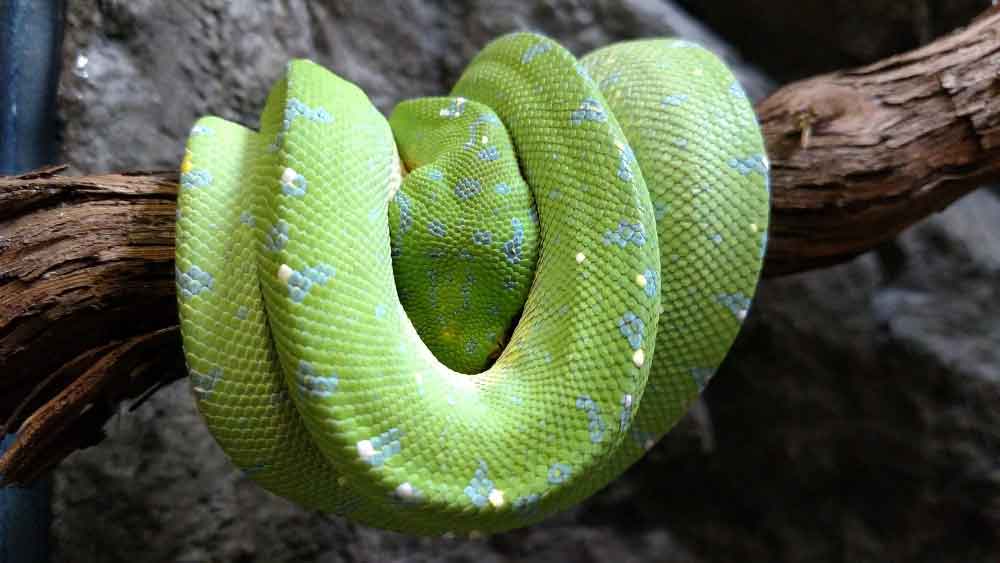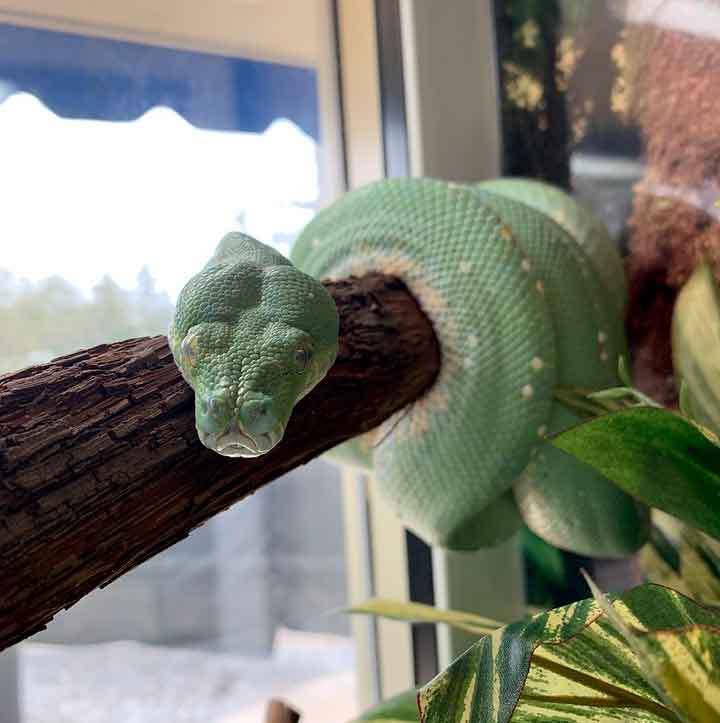GREEN TREE PYTHON
MORELIA VIRIDIS

HABITAT
Moist forests from lowland to mid-montane altitudes
GEOGRAPHIC REGION AND RANGE
Mainland New Guinea, its offshore islands, in eastern Indonesia, and the northeast Cape York Peninsula of Australia
DIET
Carnivore – small mammals, insects, birds, and reptiles
PHYSICAL DESCRIPTION
Adults are a brilliant green over most of their body, but juveniles may be either bright yellow, brick-red, or blue and turn green as they age.
LIFESPAN
Natural Habitat: 15–19 years
Under Human Care: 20+ years
THREATS
They are under threat in some parts of their range due to habitat destruction, the skin trade and hunting for food. But the largest threat to them is habitat destruction, particularly in the Indonesian (western) part of New Guinea, which is being logged for pulp, paper, plywood and palm oil plantations. Indonesia has one of the highest deforestation rates in the world, and just under half of the country’s original forest cover now remains.
STATUS
Least Concern
FUN FACTS
Almost all of what we know about their breeding is from animals in human care, as their reproduction has not been studied in the wild.
These snakes employ disruptive coloration, which is an excellent camouflage and effects near invisibility.
They look and behave similarly to the emerald tree boa of South America. This makes a great example of convergent evolution in which two unrelated species have evolved similar characters, while living on entirely different continents, because of the similarities of their environments.
Green tree pythons may have more than 100 teeth and their teeth can be up to 2 cm long!
What are AZA Zoos doing for Green Tree Pythons?
Currently, there are very few studies of green tree pythons in the wild, so much of what is known about these snakes is a result of breeding under human care in zoos or private collections. AZA zoos have long been leaders for propagation (breeding) of green tree pythons under human care, from developing artificial incubation to protocols for maternal care.

